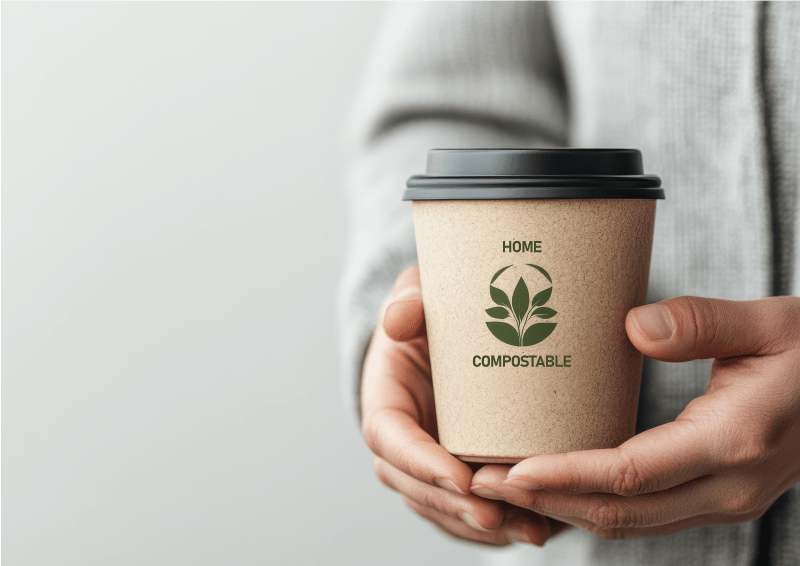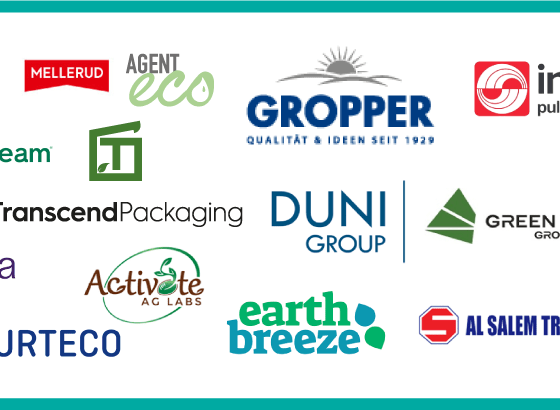Controversial Discussion on “Home Compostable” Claims for To-Go Packaging
The idea sounds almost too good to be true: packaging that, after just a few minutes of use, can simply be thrown away, dissolving into pure water and fresh oxygen, leaving behind nothing but excellent compost… Perhaps the packaging might even taste as good as its contents and could be eaten along with it? Oh, how wonderful that would be! Unfortunately, this “magic packaging” is still light years away, and not all solutions are as simple as they are sometimes marketed to be – and this is precisely what is currently sparking debate.
The increasing labelling of to-go materials, such as fibre-based cups, plates, and bowls, with the term “Home Compostable” has become a topic of discussion. Critics question whether end consumers can make the correct disposal decisions based on this label – a problem that, according to industry experts, could significantly impact the sustainable circular economy.

The BDE (Bundesverband der Deutschen Entsorgungs-, Wasser- und Kreislaufwirtschaft e.V.) (German Federal Association for Waste Management, Water, and Circular Economy) views the growing trend of certifying takeaway products (such as paper cups) as home compostable with concern. The association notes that composting conditions are too varied, and actual compostability is likely to be achieved only in very rare cases. Sascha Roth (Head of Biomass, BDE) clarified in response to a flustix inquiry:
“Our association has always opposed the collection of compostable products and packaging in the organic waste bin. These misthrows create significant additional effort during the subsequent waste treatment, as they must be sorted out and disposed of accordingly. Compostability is not achieved due to relatively short composting times, and these misthrows reduce the quality of the compost.”
On the other hand, products that use modern water-based dispersions as a barrier have been shown to exhibit high recyclability in the paper waste stream, according to studies by the Papiertechnische Stiftung (PTS) (Paper Technology Foundation). Depending on the composition of the dispersions and the recycling technology used, the PTS emphasises that such coatings generally do not negatively impact recyclability. This is because the dispersions do not form an independent plastic layer and are typically removed without issue during the recycling process, allowing for high-quality paper reuse.
Thus, to-go packaging with water-based dispersions is considered fully recyclable in the PPK (Paper, Cardboard, and Board) waste stream. According to the PPWR, such products can and should be returned to the PPK recycling cycle, which corresponds to their primary material. An industry representative told flustix:
“Fibre-based products, due to their main component, belong in the hands of the PPK sector, not in organic waste or other uncontrolled environments.”
This discussion highlights the importance of transparent labelling and realistic, consumer-comprehensible declarations to effectively support recycling cycles. Every package or product certified with the “flustix LESS PLASTICS – MIN. xx% PLASTIC-FREE” seal can and should clearly indicate its compatibility with the PPK recycling stream directly on the product.
Practical Steps Instead of Wishful Thinking
Taking a practical approach: instead of waiting for “magic packaging” or attempting to impose sweeping changes to decades-old habits of some 200 million EU citizens through bans and restrictions, public collection systems could be expanded. For example, valuable paper resources could be separated from residual waste. Even Deutsche Bahn, notoriously delayed and often service-challenged, manages to encourage its usually patient customers to separate paper from general waste at train stations.
This would be a small but effective step towards a more sustainable circular economy and would also align with the objectives of the PPWR.
Do you have questions or want to align your sustainability communication for future success? Achieve Certification Success & ensure recognised verification (EPR).
Connect with flustix and discover tailored solutions for your business needs.
About flustix
The organisation, founded in Berlin in 2017, offers six distinct flustix seals: The flustix LESS PLASTICS – MIN. xx% PLASTIC-FREE seals certify, in collaboration with recognised testing laboratories and accredited certification bodies, the entire product as well as either its packaging or the product itself. Products that refrain from using microplastics are transparently labelled with the PLASTIC-FREE – Product Content Microplastic-Free seal. The flustix RECYCLED – DIN geprüft seal certifies recyclates, semi-finished goods, and products with recycled content, including plastics, metals, and glass. flustix RECYCLABLE independently communicates the recyclability of packaging. The flustix seals serve as a guide for consumers and thereby support companies in pursuing a sustainability-focused business strategy and ensuring credible sustainability communication.

 English
English Deutsch
Deutsch


